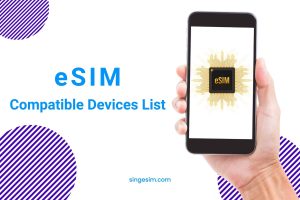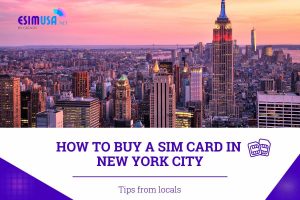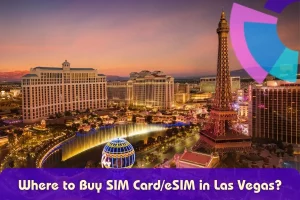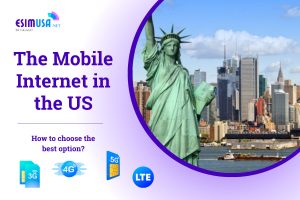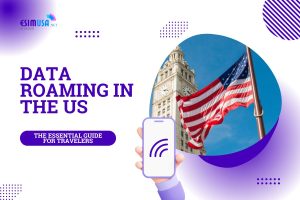Tourists frequently ponder over staying connected with their loved ones and accessing the internet while traveling to a new country. Our assistance is ready to guide you on utilizing your cell phone in the United States.
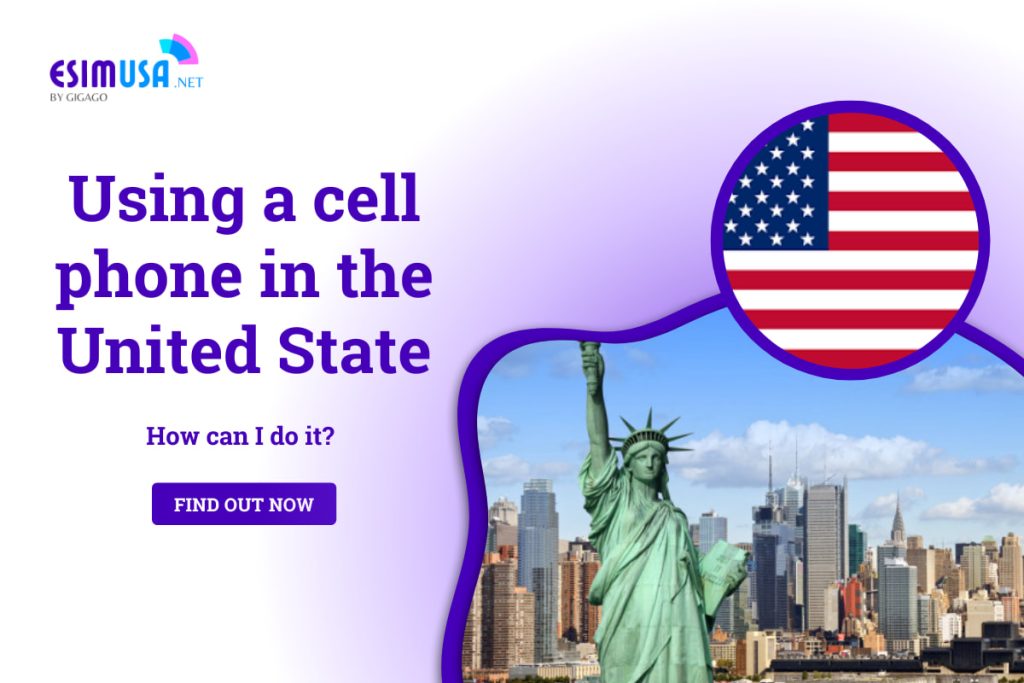
Table of Contents
I. Can I Use My Cell Phone in the US?
Yes, definitely.
Whether you can use your cell phone in the US depends on a few factors:
- Unlocked or locked phone: need to get the unlocked phone before your trip
- Bands: Check if your phone’s network bands are compatible with the US frequencies. (https://www.kimovil.com/en/frequency-checker)
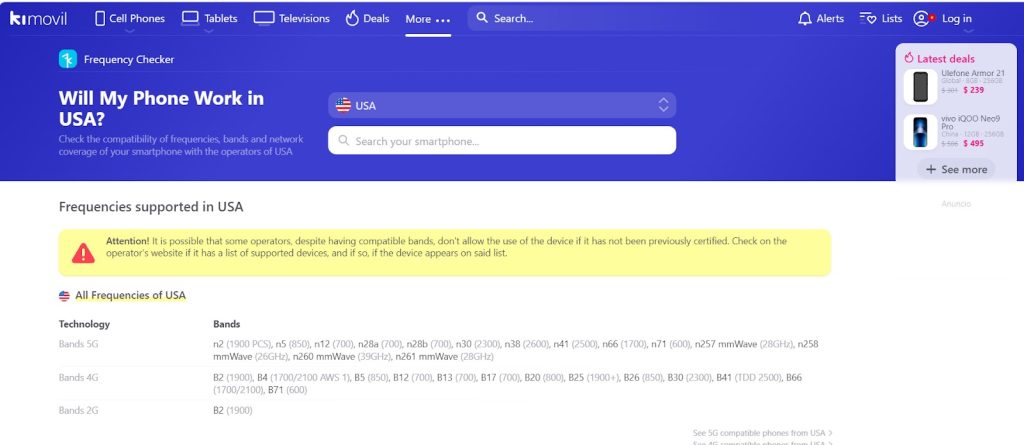
- SIM card: need a local SIM card to make local calls or use data.
Roaming: Check if your carrier offers roaming services in the United States. Roaming can be expensive, so it’s best to buy a local SIM card/eSIM.
II. How to Keep My Cell Phone Connected in the US?
Keeping your phone connected while traveling in the US is easy with a few options to consider. Here’s a breakdown of your four main choices:
| Option | Description | Pros | Cons |
|---|---|---|---|
| Free WiFi Hotspots | Connect to WiFi networks at places like coffee shops, hotels, airports etc. | Free to use. Good for basic tasks like email and maps. | Coverage may be limited. Not reliable for streaming or calls. |
| Portable WiFi Hotspot | Rent a pocket-sized WiFi device from carriers to create your own network. | Provides reliable high-speed 4G LTE connectivity anywhere. Can connect up to 5-10 devices. | Costs $10-15 per day. Extra thing to carry around. |
| Local SIM Card | Purchase a pay-as-you-go SIM card from US carriers at airports and stores. | Affordable plans with data for $20-50. Keep your number. | Have to swap SIM cards. Ensure phone is unlocked. |
| International Plan | Check if your home carrier offers roaming add-ons. | Stay on your existing number and account. | More expensive than local SIM. Coverage depends on roaming agreements. |
| eSIM | Digital SIM activation for compatible devices from carriers like T-Mobile. | Easy to set up without physical SIM swap. | Limited to certain phones and carriers. |
Choosing the Right Option:
The best option for you depends on your needs and budget.
- For short stays with limited internet use: Free WiFi might suffice.
- For longer stays with moderate internet use: Consider a local SIM card or eSIM for affordability.
- For groups or those needing constant connectivity: Pocket WiFi offers a convenient shared solution.
- For those on a tight budget and willing to risk slow speeds: Free WiFi might be the way to go, but use caution with sensitive information.
Esimusa.net – an option worth considering
Need an affordable eSIM plan for your USA trip?
Check out esimusa.net – we offer some of the best value eSIM data plans for travel in the USA. With plans starting from as little as $8 for 3GB valid for 10 days, esimusa.net has a plan to suit every budget and trip duration.
Best of all, esimusa.net supports a wide range of devices including all recent iPhone, Samsung Galaxy and Google Pixel models. Activation is simple – just scan the QR code and you’ll be connected to 4G LTE speeds across the USA.
Plans that may interest you
Best of all, esimusa.net supports a wide range of devices including all recent iPhone, Samsung Galaxy and Google Pixel models. Activation is simple – just scan the QR code and you’ll be connected to 4G LTE speeds across the USA.
III. Getting the Most out of Your Cell Phone during Travel to the US
Your phone is a lifeline these days, and even more so when traveling. Here’s how to leverage your trusty device to navigate the United States like a pro:
Check Compatibility
Before you depart, ensure your phone’s network bands are compatible with US carriers. This can often be found on your carrier’s website or by contacting them directly.
Download Offline Maps
Relying solely on GPS can drain your data. Download offline maps from Google Maps or other navigation apps to ensure you’re never lost, even without a connection.
Battery Optimization
Activate your phone’s battery-saving mode to extend your juice throughout the day. This might limit background processes and features.
Consider a Portable Charger
A portable charger ensures you never miss a photo opportunity or crucial Google search due to a low battery.
IV. FAQs about Using Cell Phone in the US
What are the major cell phone carriers in the US?
The three largest nationwide carriers are Verizon, AT&T, and T-Mobile.
Need to stay connected during your USA trip but not sure which network is best? Read our US operator detailed comparisons now at Best Mobile Network Operators in the USA
Do I need to unlock my cell phone in the US?
If taking a phone from another country, it’s best to have it unlocked so it will work on any of the major US carriers. Carrier-locked phones may only work on certain networks.
What cell phone frequencies are used in the US?
The main LTE frequencies are 700MHz, 850MHz, 1700/2100MHz, 1900MHz. 5G frequencies include 600MHz, 2500MHz, 3700MHz, and higher mmWave bands. International phones may not support all US frequencies.
Can I use my existing cell phone in the US?
You may be able to if it supports the major US LTE bands. However, some carriers like AT&T have strict approval policies. It’s safer to get a cheap unlocked phone sold locally.
Do prepaid plans exist in the US?
Yes, prepaid is very common. The major carriers and their MVNO brands like Cricket, Metro by T-Mobile offer prepaid options. Plans provide data with no long-term contract.
Is there tax added to cell phone plans?
Prices advertised don’t include sales tax, which can be up to 10% extra depending on location. Online top ups may be taxed too, though some third party sites avoid this.
Do I need to call customer service to activate a SIM?
Usually no – prepaid SIM cards can simply be inserted into an unlocked compatible phone and will work right away. Just make sure to set up account online or via app.
V. What’s the Most Efficient Way to Connect my Cell Phone in the US?
Connecting your phone efficiently in the United States depends on various factors, such as your location, the type of phone you have, and your specific needs. Here are some general tips:
- Pick one with good coverage in your area.
- Ensure your phone works with the carrier’s technology (GSM or CDMA).
- If your phone is unlocked, use a SIM card from your chosen carrier.
- Decide based on your usage and budget.
- Ensure good coverage and speed in your specific locations.
- Improve connectivity in areas with weak signals.

